I’m waiting for the Kenya air flight to Cape Town in a new spacious air-conditioned airport. On the ground floor so I will need to carry my 12kg bag up the stair.
As we drove the 22km to the airport, on a wide well maintained road, lined by the green thorn trees, black-stemmed brown leafed mopani, and msasa, I debated whether I am more Rhodesian than South African. I think so but will wait till I’m back in Perth. The taxi driver was Matabele. His heritage goes back to Lobengula then living in ‘The place of slaughter’, Bulawayo, some 400km south east. It was he who Rhodes and Jamison negotiated with for land and free passage. He later became concerned about the deal, so caused the death of many settlers, in particular, the decimation of the Jamison party who fought to the end. The Matabele are an offshoot of the Natal Zulu. Now this history is dragged from school days so may not be absolutely correct!
Its a 3hr flight on Kenya air to Cape Town, the ‘Mother City’. Established as a victual stop for the Dutch East India Company ships in the 1800’s, it was later taken by the English. However, the Portuguese explorer Vasco da Gama was here way before that, only erecting stone crosses where he harboured. And before him? The Hotentots are a people now mixed with black and white, the ‘Coloureds’ as they were named in the apartheid era.
It is interesting to see how the ‘sins of the fathers are passed down to the 7th generation’. When the British took the Cape, the Dutch were well established, not that the British cared. The Dutch were treated as 2nd class people; their children forced to English schools, the developing Afrikaans language banned. And so the Great Trek started; wagons pulled by teams of oxen were loaded as families sought a place far from these laws. It is said they also chose to not have homes in sight of the smoke of neighbours, but could also be due to the need for larger land in the semi- desert Karoo. And so as they gradually migrated north they came in contact with the local Bantu peoples, requiring encircled laagers as protection. Meantime the British decided to send people to the south eastern area around Port Elizabeth, encouraging them with very upbeat information on the place of honey! Amongst these 1820 settlers are my Scottish ancestors. They faced hard times in the poor soils and fiery Xhosa cattle raids. My father was born in Vryburg not far inland; my first year university was at nearby Rhodes Uni in Grahamstown, and daughter Karen was born there too.
Gold and diamonds were discovered in Johannesburg and Kimberley, starting a rush by prospectors around the world; the Dutch, led by Paul Kruger, were overwhelmed by this hoard; the British once again took charge, ignoring treaties, precipitating the Boer Wars of the 1890’s and 1900’s. The Boers fought a cut and run war against the red troops until the British played dirty by imprisoning the Dutch families resulting in death and disease, and hate till now. Once again the Dutch were under the yoke of British rule. The two world wars did nothing to improve matters; many Boers supported Hitler with some exceptions like General Jan Smuts who later became Prime Minister.
1948 was a turning point. The English United Party lost power to the Afrikaans Nationalists which became more draconian over time, treating the Black people as they were in the past. I should add that my mother was of French Huguenot stock, similar to the Dutch so I often felt ‘in between.
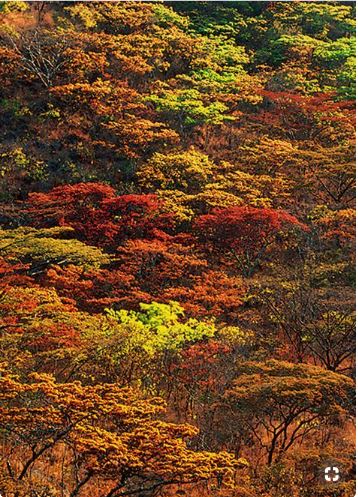
Msasa spring 
Victoria Falls curios
Our flat 901 in Cape Town is at the top of an iconic 9 story art deco building in the heart of the city. Love it. A lady met us and took us enthusiastically on a tour through the confusing passages. Formally the Old Mutual Insurance, it was converted to flats in the ‘70’s. The exterior is decorated with friezes and figures; the heavy brass doors to the tiny lifts are engraved. The core is an empty space with all flats on the exterior. All are double height with interior stairs to a second balcony bed or dining space. Quirky and unconventional.
The building is a fine example of art deco architecture and design. Opened in 1940 and it has many interesting internal features such as the banking hall, assembly room, directors’ board room; external features include a dramatic ziggurat structure, prismoid (triangular) windows, and one of the longest carved stone friezes in the world. It has been said that it provides evidence of the colonial attitudes of the time, and the “ideals of colonial government promulgated by Rhodes in the late nineteenth century”.
The Old Mutual business has a long history. In 1845 John Fairbairn (a Scot) founded “The Mutual Life Assurance Society of the Cape of Good Hope” in Cape Town. In the 1930s it became clear that a new headquarters building was needed and very ambitious targets were set for the building: it was to be the tallest building in South Africa (possibly in the whole continent of Africa, with the exception of the pyramids in Egypt), it was to have the fastest lifts, it was to have the largest windows. At the same time it was to epitomise the values of the business: “Strength, Security and Confidence in the Future”; this demanded a combination of traditional and contemporary design.
Completed in 1939, it opened early in 1940 with a great fanfare. The local paper provided a 16 page supplement,[4] and South African architects and dignitaries enthused about it. In his definitive examination of the design of the building, Federico Freschi summarises the status of the building: “Ultimately, the consensus suggests that the Old Mutual Building is at once a worthy monument to modern design principles and the consolidation of an important corporate and public image.”
Conversion to residential occupation began under the direction of Robert Silke at Louis Karol Architects. The name of the building was changed by the developers to Mutual Heights, a decision that did not find favour with all owners and residents involved in the new community. Despite scepticism about the name, it is generally agreed that the conversion was the first in a series of projects that re-invigorated the central business district.
The original design of the building is attributed to Louw & Louw (Cape Town architects), working with Fred Glennie (best known at the time as a mentor to architectural students) – Mr Glennie is personally credited with most of the detailed work but Ivan Mitford-Barberton was also involved with some internal details as well as with the external granite decorations.
The main lifts in the building are fast (“the fastest in Africa” it was claimed when the building opened) and no expense was spared – even in the basement parking area, the lifts are trimmed with black marble. Each door has an etched representation of an indigenous bird or animal from South Africa, with significant plants as additional decoration, or in some cases the corporate logo of the time, three entwined anchors, with Strelitzia reginae, Disa uniflora and proteas at the top.
On the Parliament Street facade there are carved granite figures representing nine ethnic African groups (not just South African): “Xosa“, “Pedi“, “Maasai“, “Matabele“, “Basuto“, “Barotse“, “Kikuyu“, “Zulu“, and “Bushman“.
Around the three sides of the building facing Darling Street, Parliament Street and Longmarket Street there is a 386 feet (118 metre) frieze depicting scenes from the colonial history of South Africa, reported at its completion to be the longest such frieze in the world. (My photo shows Rhodes negotiating with the Matebele).
We left soon after arrival for Lions Head. We have made the steep climb up the slope of Lions Head to where solid rock rises vertically to the top, for a sunset view of the west side of Table Mt and the 12 apostles. I’m here early to find a spot clear of proteas. Its hot with a cool breeze occasionally bringing the scent of proteas and other flowering shrubs. Far below the blue sea breaks on Clifton beach and rocks. Its peaceful; the soft, sea waves are a background to the occasional bird and more frequent hikers. So peaceful, but I know that those homes down there are locked down as night falls. (cape catalogue1900.pdf)
As the sun set, an eagle called high above along the cliff face. We walked and slid down in the dark, David well ahead as usual. They decided to go to the harbour V & A for dinner. It was after 8 before we ordered, nearly 10 when we left. The meal was too large; I should not have eaten it all. A 4 man band played loudly, fortunately a Country &. Western style I like. Its now 11.30.

Table Mt 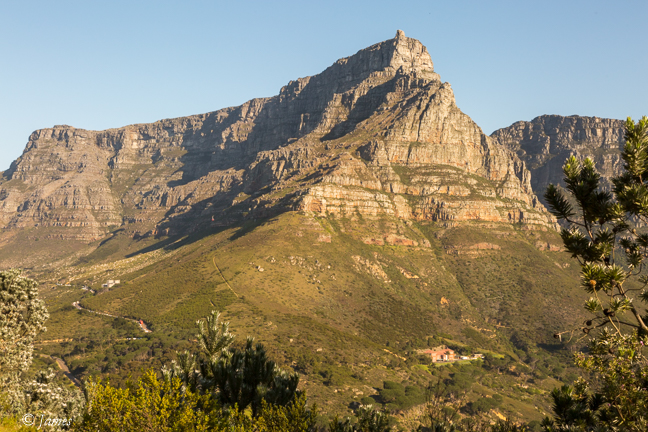
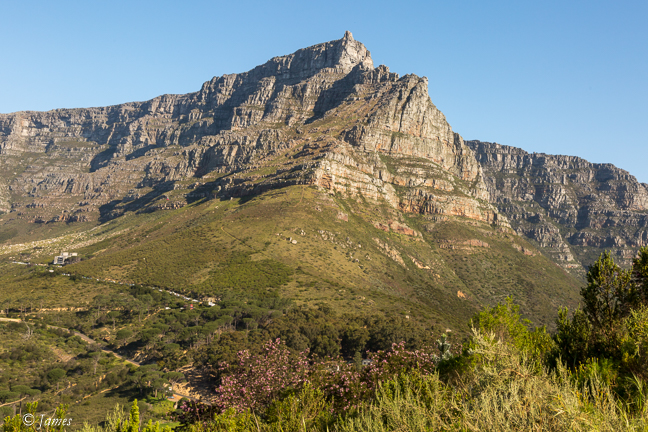
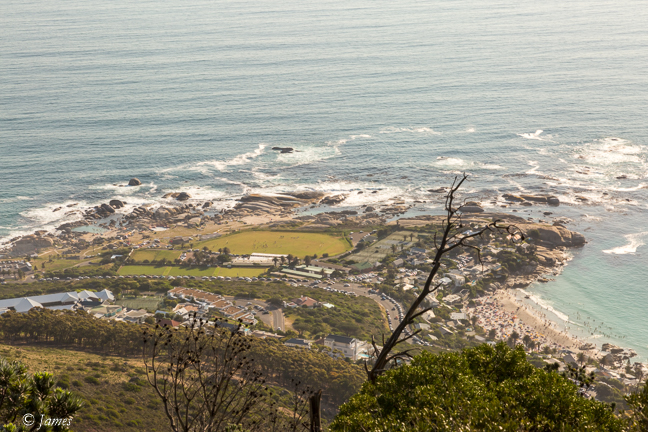
Clifton 

The Victoria & Alfred Waterfront in Cape Town is situated on the Atlantic shore. Situated in South Africa’s oldest working harbor, the 123 hectares area has been developed for mixed-use, with both residential and commercial real estate. The Waterfront attracts more than 23 million visitors a year.
Prince Alfred, second son of Queen Victoria, visited the Cape Colony harbour in 1860 as a sixteen-year-old Royal Navy Midshipman on HMS Euryalus. He made a big splash with the colonials on this first-ever visit by a member of the Royal Family. The first basin of the new Navy Yard was named after him and the second after his mother. The complex houses over 450 retail outlets, including fashion, home ware and curios, jewelry, leather goods and audio-visual equipment. The V&A is also still a working harbour and fishing boats bring in fresh fish, and larger container ships are towed in by tugboats.







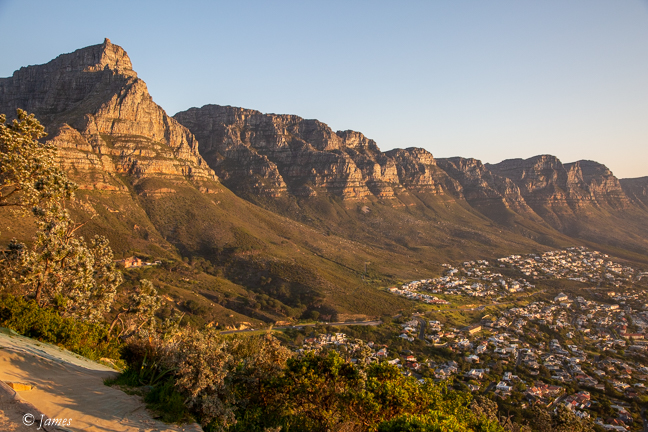






Great history lesson in this one. I remember doing history at Elanskraal and I found it fascinating. Once we got to Australia I never took too much notice of the Aussie history. I found it boring in comparison. I was also feeling quite rebellious, determined not to let Australia become home.